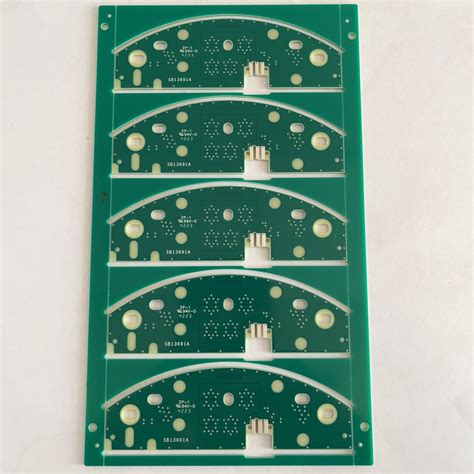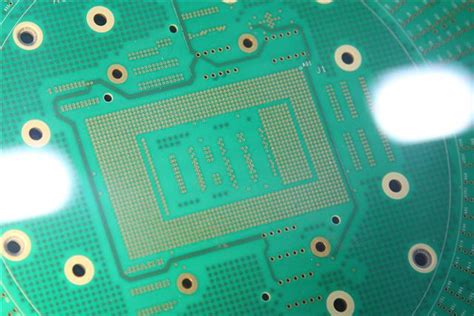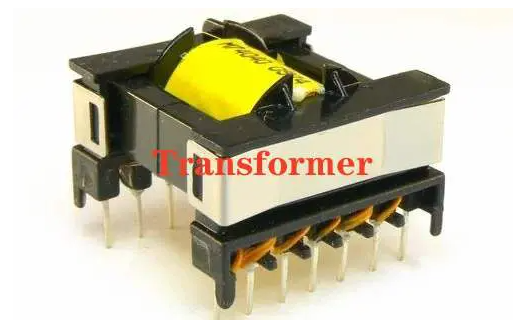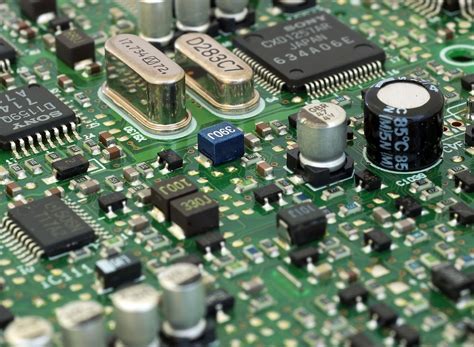Pcb v grooving machine
Benefits Of Using A PCB V Grooving Machine In Manufacturing
The utilization of a PCB V grooving machine in the manufacturing process offers a multitude of benefits that significantly enhance both the efficiency and quality of printed circuit board (PCB) production. As the demand for more compact and sophisticated electronic devices continues to rise, manufacturers are increasingly turning to advanced machinery to meet these stringent requirements.
One such piece of equipment, the PCB V grooving machine, stands out for its ability to deliver precise and consistent results, thereby playing a crucial role in modern electronics manufacturing.
To begin with, the primary advantage of using a PCB V grooving machine is its precision. This machine is designed to create V-shaped grooves on PCBs, which are essential for the subsequent separation of individual boards from a larger panel. The accuracy with which these grooves are cut is paramount, as it directly impacts the integrity and functionality of the final product. By employing a PCB V grooving machine, manufacturers can achieve a high degree of precision, ensuring that each groove is cut to the exact specifications required. This level of accuracy minimizes the risk of damage to the boards during the separation process, thereby reducing waste and improving overall yield.
In addition to precision, the PCB V grooving machine also offers enhanced efficiency.
Traditional methods of creating grooves, such as manual scoring or using less specialized equipment, can be time-consuming and labor-intensive. In contrast, a PCB V grooving machine automates this process, significantly speeding up production times. This automation not only reduces the labor costs associated with manual methods but also allows for higher throughput, enabling manufacturers to meet tight deadlines and increase their production capacity. Consequently, the use of a PCB V grooving machine can lead to substantial cost savings and improved profitability.
Moreover, the consistency provided by a PCB V grooving machine is another critical benefit. In manufacturing, consistency is key to maintaining high-quality standards.
Variations in groove depth or alignment can lead to defects in the final product, which can be costly to rectify. A PCB V grooving machine ensures that each groove is identical, thereby maintaining uniformity across all boards produced. This consistency is particularly important in high-volume production runs, where even minor deviations can accumulate into significant quality control issues. By ensuring uniformity, the PCB V grooving machine helps manufacturers maintain their reputation for quality and reliability.
Furthermore, the versatility of a PCB V grooving machine cannot be overlooked.
These machines are capable of handling a wide range of PCB materials and thicknesses, making them suitable for various applications. Whether producing boards for consumer electronics, automotive systems, or industrial equipment, a PCB V grooving machine can be adjusted to meet the specific requirements of each project. This adaptability not only broadens the scope of potential applications but also allows manufacturers to respond more flexibly to changing market demands.
In conclusion, the benefits of using a PCB V grooving machine in manufacturing are manifold. From precision and efficiency to consistency and versatility, these machines offer significant advantages that enhance the overall production process. As the electronics industry continues to evolve, the adoption of advanced machinery like the PCB V grooving machine will undoubtedly play a pivotal role in meeting the increasing demands for high-quality, reliable, and cost-effective PCBs. By investing in such technology, manufacturers can position themselves at the forefront of innovation, ensuring their competitiveness in a rapidly changing market.

How To Maintain Your PCB V Grooving Machine For Longevity
Maintaining your PCB V grooving machine is essential for ensuring its longevity and optimal performance. Regular maintenance not only extends the life of the machine but also guarantees the quality and precision of the PCBs produced. To achieve this, it is crucial to follow a systematic approach that encompasses various aspects of the machine’s upkeep.
Firstly, it is important to establish a routine cleaning schedule.
Dust and debris can accumulate on the machine’s surface and internal components, potentially causing malfunctions or reducing efficiency. Using a soft brush or compressed air, gently remove any particles from the machine. Pay special attention to the cutting blades and grooves, as these areas are particularly susceptible to buildup. Additionally, ensure that the machine is powered off and unplugged before performing any cleaning tasks to avoid accidents.
In conjunction with cleaning, regular lubrication of the moving parts is vital.
The cutting blades, in particular, require consistent lubrication to maintain their sharpness and functionality. Use a high-quality lubricant recommended by the manufacturer, and apply it sparingly to avoid excess buildup. Over-lubrication can attract dust and debris, counteracting the benefits of the lubrication process. By keeping the moving parts well-lubricated, you can prevent wear and tear, thereby extending the machine’s lifespan.
Another critical aspect of maintenance is the inspection and replacement of worn-out components.
Over time, parts such as cutting blades, belts, and bearings may degrade due to continuous use. Regularly inspect these components for signs of wear, such as dull blades or frayed belts. If any parts appear to be compromised, replace them promptly with genuine parts from the manufacturer. Using authentic components ensures compatibility and maintains the machine’s performance standards.
Furthermore, it is essential to calibrate the machine periodically.
Calibration ensures that the machine operates with precision, producing PCBs that meet the required specifications. Follow the manufacturer’s guidelines for calibration procedures, and use the appropriate tools to make any necessary adjustments. Regular calibration not only enhances the quality of the output but also prevents potential issues that could arise from misalignment or inaccuracies.
In addition to these routine tasks, it is advisable to keep a detailed maintenance log.
Documenting each maintenance activity, including cleaning, lubrication, inspections, and calibrations, provides a comprehensive record of the machine’s upkeep. This log can be invaluable for troubleshooting issues, scheduling future maintenance, and ensuring that no aspect of the machine’s care is overlooked.
Moreover, training and educating the operators of the PCB V grooving machine is crucial.
Proper handling and operation of the machine can significantly impact its longevity. Ensure that all operators are well-versed in the machine’s functions, maintenance procedures, and safety protocols. Providing ongoing training and updates on best practices can help prevent operator errors that could lead to machine damage or reduced efficiency.
Lastly, consider scheduling professional maintenance services periodically.
While routine maintenance can be performed in-house, professional technicians have the expertise and tools to conduct thorough inspections and address any complex issues. Regular professional maintenance can complement your efforts, ensuring that the machine remains in optimal condition.
In conclusion, maintaining your PCB V grooving machine involves a combination of regular cleaning, lubrication, component inspection, calibration, and proper operator training. By adhering to these practices and keeping detailed records, you can ensure the machine’s longevity and consistent performance. Investing time and effort in maintenance not only protects your investment but also upholds the quality of the PCBs produced, ultimately contributing to the success of your operations.

Key Features To Look For In A PCB V Grooving Machine
When selecting a PCB V grooving machine, it is essential to consider several key features to ensure optimal performance and efficiency. One of the primary aspects to evaluate is the precision of the machine. High precision is crucial for achieving accurate V-grooves, which are necessary for the proper separation of individual PCB units. Machines equipped with advanced control systems and high-quality cutting tools can significantly enhance precision, thereby reducing the risk of errors and improving the overall quality of the final product.
Another important feature to consider is the machine’s speed and throughput capabilities.
In a high-volume production environment, the ability to process PCBs quickly without compromising on quality is vital. Machines that offer adjustable speed settings and high-speed operation can help manufacturers meet tight deadlines and increase productivity. Additionally, the integration of automated features, such as automatic loading and unloading systems, can further streamline the production process and reduce manual labor.
Durability and build quality are also critical factors to take into account.
A robust and well-constructed machine can withstand the rigors of continuous operation and maintain consistent performance over time. Look for machines made from high-quality materials and components, as these are more likely to offer long-term reliability and require less frequent maintenance. Furthermore, machines with a solid warranty and good after-sales support can provide added peace of mind and ensure that any issues are promptly addressed.
Ease of use is another key consideration when choosing a PCB V grooving machine.
User-friendly interfaces and intuitive controls can significantly reduce the learning curve for operators and minimize the risk of errors. Machines that offer programmable settings and customizable parameters can also provide greater flexibility, allowing operators to easily adjust the machine to suit different PCB designs and specifications. Additionally, clear and comprehensive documentation, including user manuals and training materials, can further enhance the ease of use and ensure that operators can quickly become proficient in using the machine.
Safety features should not be overlooked when evaluating a PCB V grooving machine.
Ensuring the safety of operators is paramount, and machines equipped with safety guards, emergency stop buttons, and other protective measures can help prevent accidents and injuries. Moreover, compliance with relevant safety standards and regulations is essential, as this demonstrates the manufacturer’s commitment to providing a safe and reliable product.
Energy efficiency is another important aspect to consider, particularly in today’s environmentally conscious manufacturing landscape.
Machines that consume less power can help reduce operational costs and minimize the environmental impact of the production process. Look for machines that incorporate energy-saving technologies and features, such as efficient motors and power management systems, to achieve greater sustainability.
Lastly, consider the machine’s compatibility with existing production systems and processes.
Seamless integration with other equipment and software can enhance overall efficiency and reduce the likelihood of disruptions. Machines that offer connectivity options, such as Ethernet or USB ports, can facilitate easy data transfer and communication with other devices, further streamlining the production workflow.
In conclusion, selecting the right PCB V grooving machine involves careful consideration of several key features, including precision, speed, durability, ease of use, safety, energy efficiency, and compatibility. By thoroughly evaluating these aspects, manufacturers can ensure that they invest in a machine that meets their specific needs and delivers consistent, high-quality results.
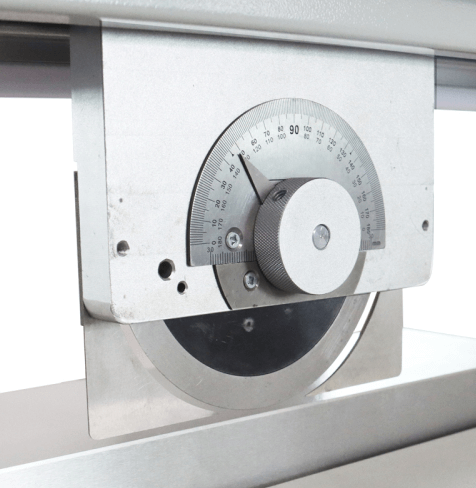
Comparing PCB V Grooving Machines: Which One Is Right For You?
When it comes to the manufacturing of printed circuit boards (PCBs), precision and efficiency are paramount. One of the critical processes in PCB production is V-grooving, which involves creating V-shaped cuts on the board to facilitate easy separation of individual units. The choice of a PCB V grooving machine can significantly impact the quality and productivity of the manufacturing process. Therefore, understanding the different types of V grooving machines and their respective advantages is essential for making an informed decision.
Firstly, it is important to recognize that PCB V grooving machines come in various configurations, each designed to meet specific production needs.
Manual V grooving machines are often favored by small-scale manufacturers due to their cost-effectiveness and simplicity. These machines require an operator to manually feed the PCB into the machine, which then makes the necessary cuts. While manual machines are less expensive, they are also slower and more prone to human error, making them less suitable for high-volume production.
On the other hand, semi-automatic V grooving machines offer a middle ground between manual and fully automatic systems.
These machines typically feature automated feeding mechanisms, reducing the need for constant human intervention. Semi-automatic machines can achieve higher precision and consistency compared to manual machines, making them a popular choice for medium-sized manufacturers. However, they still require some level of operator oversight, which can limit their efficiency in large-scale operations.
Fully automatic V grooving machines represent the pinnacle of efficiency and precision in PCB manufacturing.
These machines are equipped with advanced features such as computer numerical control (CNC) systems, which allow for highly accurate and repeatable cuts. Fully automatic machines can handle large volumes of PCBs with minimal human intervention, significantly reducing labor costs and the potential for errors. Additionally, these machines often come with sophisticated software that enables easy programming and customization of the grooving process, further enhancing their versatility.
When comparing PCB V grooving machines, it is also crucial to consider the specific requirements of your production process.
Factors such as the thickness and material of the PCBs, the desired depth and angle of the grooves, and the overall production volume can all influence the choice of machine. For instance, thicker PCBs may require more robust machines with higher cutting power, while high-volume production lines may benefit from the speed and efficiency of fully automatic systems.
Moreover, the cost of the machine is another critical factor to consider.
While fully automatic V grooving machines offer the highest level of performance, they also come with a higher price tag. Therefore, it is essential to weigh the initial investment against the potential long-term benefits, such as increased productivity and reduced labor costs. In some cases, a semi-automatic machine may provide a more balanced solution, offering a good mix of performance and affordability.
In conclusion, selecting the right PCB V grooving machine involves a careful evaluation of various factors, including the scale of production, the specific requirements of the PCBs, and the available budget. By understanding the strengths and limitations of manual, semi-automatic, and fully automatic machines, manufacturers can make an informed decision that aligns with their operational needs and financial constraints. Ultimately, the right choice of V grooving machine can enhance the efficiency, precision, and overall quality of the PCB manufacturing process.

